2017 Mercedes-Benz E300 4Matic Review - Uppercase C or Lowercase S?
Style is subjective. Beauty is in the eye of the beholder. You believe the Mini Paceman is the ugliest of Minis; I say it’s the best. You believe the X6 is BMW at its masculine and modern best; I believe the X6 stands in stark and unfortunate contrast to the beautiful delicacy of the BMW 2002tii.
We disagree. And that’s okay.
Therefore, when we approach the 2017 Mercedes-Benz E-Class — supplied here by Mercedes-Benz Canada in E300 4Matic form — we may differ on the merits and demerits of the new midsize sedan’s design. But surely on this we can concur: the E-Class is now less distinguishable from its baby C-Class brother than ever before.
Is that a good thing? Perhaps not. But on the other hand, the new E-Class is now less distinguishable from its big S-Class brother than ever before.
Regardless of the image it presents to the world, the fifth-generation E-Class is much more Benz than the C-Class, and very nearly as much Benz as the S-Class.
POWER
Rated by the EPA at 22 miles per gallon in the city and 29 on the highway, we averaged 28 in suburban/highway driving that involved little traffic. The auto stop-start shuts down the 2.0T unobtrusively but can be a touch gruff reigniting.
We discussed the 2.0T’s plentiful power already on TTAC, suggesting in the process that cylinder counts simply aren’t what they used to be. There is the briefest sense of 4,045 pounds needing to be propelled, but a 0-60 mph time of 6.5 seconds ( according to Car And Driver) and a 50-70 time of 5.0 seconds tells the story of a car that’s not wanting for power. Just as you scarcely hear the breeze, you don’t really hear — and most definitely do not feel — the 2.0-liter at work.
The nine-speed automatic typically operates as a background device, not calling much attention to itself in the faulty ways so many nine-speeds do. (Once, when decelerating down a high-speed hill to a stop, the nine-speed shifted down harshly into second.) Transmission responsiveness is quickly changed by shuffling the car through Eco, Comfort, Sport, and Sport+ modes.
HANDLING
Prodded on a winding road, the E300 4Matic is by no means a nimble and agile C-Class, but the E-Class doesn’t suddenly become undone. There’s a pervasive sense of heft, of a few hundred additional pounds. But the steering weights up naturally and there’s enough information coming up through the seat of your pants to indicate that little needs changing for the E-Class to become a genuine sports sedan. In this guise, it’s a proper cross-country cruiser with the ability to up the pace.
If there’s a dynamic letdown, the E300 4Matic’s brake feel is most definitely it. Prolonged mush gives way to proper deceleration, but only after diminishing confidence caused by a squishy initial reply. Mileage accrued by crusty auto journos can’t be blamed — this E300 4Matic is a relatively fresh addition to the press fleet.
TECH
Though precise at almost every juncture, it’s in these confusing moments that the E-Class feels like it loses peripheral vision. Panic ensues, and the Benz throws you forward, jerks the steering wheel and elevates your heart rate only to discover that there was absolutely nothing catastrophic about to happen.
Drive Pilot, the videos for which you’ve seen entail a high degree of hands-off driving, is an amazing bit of kit that works flawlessly so often. And the speed with which this sort of technology has made its way into new vehicles is striking. As an invisible vehicular shepherd of sorts, the systems that work together to provide a level of autonomous driving in the 2017 E-Class are individually impressive safety items: blind-spot monitoring and adaptive cruise, as examples. The end result, however, at least on my drive routes in late 2016, suggests that the amalgam is less than the sum of its parts.
The visible and tangible elements of the E-Class’s high-tech leap forward are executed more adroitly. Controlled mainly by two touchpads on the steering wheel, a center console-mounted control wheel, and a control pad above the wheel, screens spanning much of the dashboard are chock full of customizable arrays responsible for seemingly endless functions. My favourite setup had the phone menu in the far left of the gauge cluster, a centralized tachometer with a digital speedometer in its middle, and efficiency readouts on the far right of the driver’s main unit. Then I split the 12.3-inch center screen with a smaller navigation map and a wider radio/media box.
That’s a lot going on, and in a few days of faux E300 4Matic ownership with this optional wide-screen upgrade, I was sometimes left wondering where I’d left the information, searching the width of the car (eyes off the road) for enlightenment.
Three weeks, maybe less, would likely be enough for you to settle on a personalized setup that would allow you to intuitively take advantage of the system’s speed while developing the required skill for the finicky thumbpads on the steering wheel. Three weeks may also be enough for you to forget how silly Mercedes-Benz’s column shifter feels.
SIZE
The C-Class, like so many of its direct competitors, offers little in the way of rear seat space. But the E-Class feels bigger in every direction thanks to a cabin that’s roughly nine percent larger. Clearly not as spacious inside as a mainstream front-wheel-drive midsize sedan with similar exterior dimensions, this car still has proper family sedan space. Imagine how much more family-friendly it’ll be in E-Class Wagon form.
Meanwhile, front seat comfort, admittedly as subjective as exterior styling, is made better by a broad range of adjustability, from the headrest to the seat cushion length to the power tilt/telescoping wheel.
MONEY
If you’re looking for the best value in the midsize luxury sphere, the E-Class ain’t it, not that the E-Class’s especially premium pricing stops it from being the segment leader in sales.
For the E300 4Matic’s U.S. base price of $55,575, Lexus sells an all-wheel-drive GS, not with the 2.0-liter turbo but rather the 311-horsepower 3.5-liter V6, plus a premium package, a cold weather package, a Mark Levinson audio upgrade, and Lexus’s Intuitive Parking Assist.
Jaguar’s 340-horsepower all-wheel-drive XF 35t is $55,485 with a $1,000 cold weather package.
Hyundai’s new Genesis Motors sells the Genesis G80 with a 5.0-liter V8 at the E300 4Matic’s basic price point.
Of course, this is no basic E300 4Matic. (There is no direct like-for-like cross-border comparison, so equipment levels aren’t identical.) The $11,250 Premium 3 Package, which includes Premium 1 and Premium 2 contents, features a list of 28 additions: keyless access, parking pilot, a Burmester audio upgrade, and a lengthy catalog of aforementioned safety gear. Throw in optional wheels and heated and cooled seats and suddenly you’re cresting the $70K marker.
Yet the driving experience is a decidedly S-Class-like experience. And that car starts at $97,525. Perhaps the 2017 Mercedes-Benz E300 4Matic is a screaming deal.
[Images: © Timothy Cain/The Truth About Cars]
Timothy Cain is the founder of GoodCarBadCar.net, which obsesses over the free and frequent publication of U.S. and Canadian auto sales figures. Follow on Twitter @goodcarbadcar and on Facebook.
More by Timothy Cain
Latest Car Reviews
Read moreLatest Product Reviews
Read moreRecent Comments
- Dave Holzman My '08 Civic (stick, 159k on the clock) is my favorite car that I've ever owned. If I had to choose between the current Civic and Corolla, I'd test drive 'em (with stick), and see how they felt. But I'd be approaching this choice partial to the Civic. I would not want any sort of automatic transmission, or the turbo engine.
- Merc190 I would say Civic Si all the way if it still revved to 8300 rpm with no turbo. But nowadays I would pick the Corolla because I think they have a more clear idea on their respective models identity and mission. I also believe Toyota has a higher standard for quality.
- Dave Holzman I think we're mixing up a few things here. I won't swear to it, but I'd be damned surprised if they were putting fire retardant in the seats of any cars from the '50s, or even the '60s. I can't quite conjure up the new car smell of the '57 Chevy my parents bought on October 17th of that year... but I could do so--vividly--until the last five years or so. I loved that scent, and when I smelled it, I could see the snow on Hollis Street in Cambridge Mass, as one or the other parent got ready to drive me to nursery school, and I could remember staring up at the sky on Christmas Eve, 1957, wondering if I might see Santa Claus flying overhead in his sleigh. No, I don't think the fire retardant on the foam in the seats of 21st (and maybe late 20th) century cars has anything to do with new car smell. (That doesn't mean new car small lacked toxicity--it probably had some.)
- ToolGuy Is this a website or a podcast with homework? You want me to answer the QOTD before I listen to the podcast? Last time I worked on one of our vehicles (2010 RAV4 2.5L L4) was this past week -- replaced the right front passenger window regulator (only problem turned out to be two loose screws, but went ahead and installed the new part), replaced a bulb in the dash, finally ordered new upper dash finishers (non-OEM) because I cracked one of them ~2 years ago.Looked at the mileage (157K) and scratched my head and proactively ordered plugs, coils, PCV valve, air filter and a spare oil filter, plus a new oil filter housing (for the weirdo cartridge-type filter). Those might go in tomorrow. Is this interesting to you? It ain't that interesting to me. 😉The more intriguing part to me, is I have noticed some 'blowby' (but is it) when the oil filler cap is removed which I don't think was there before. But of course I'm old and forgetful. Is it worth doing a compression test? Leakdown test? Perhaps if a guy were already replacing the plugs...
- Crown No surprise there. The toxic chemical stew of outgassing.








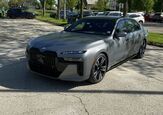











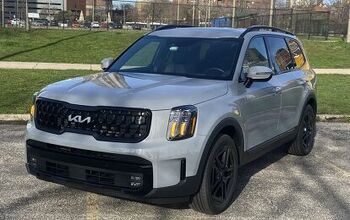
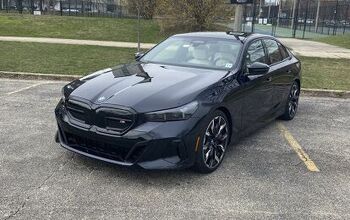
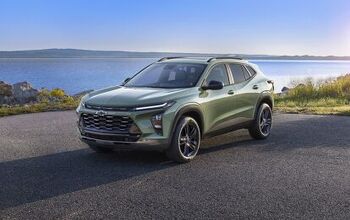
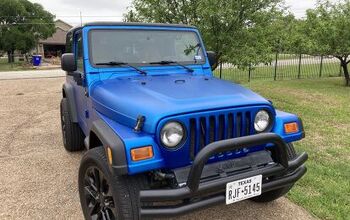
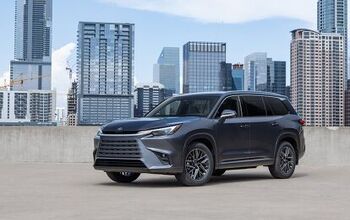
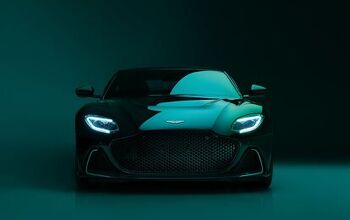
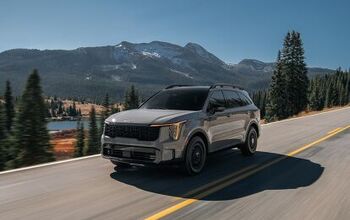
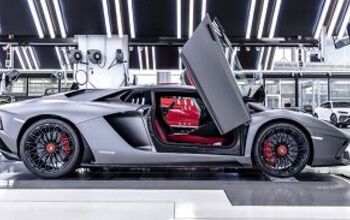
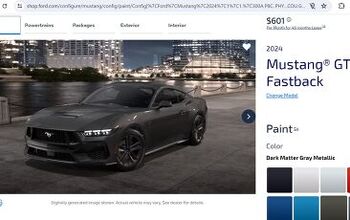

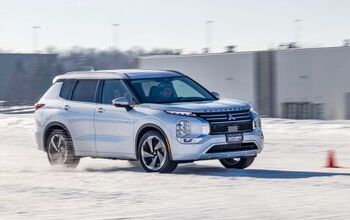
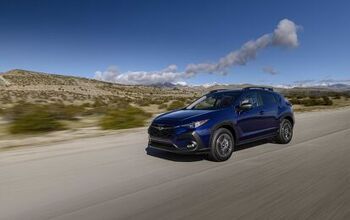
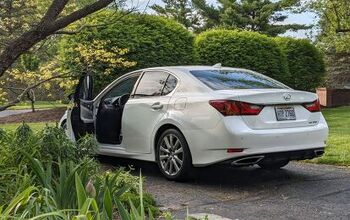

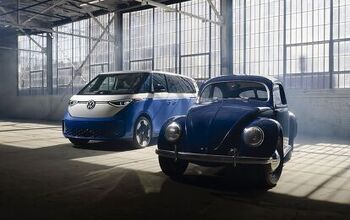
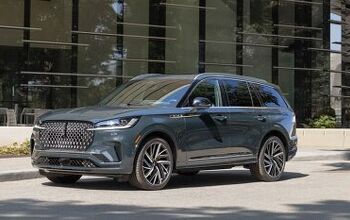
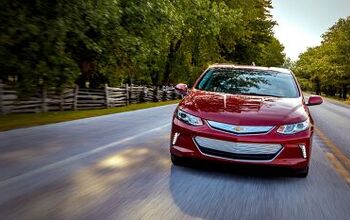

Comments
Join the conversation
Keyless entry an option in a US$55,600 luxo-mobile? I don't think so!
Honestly, I see no reason to buy this over an ML350. Similarly equipped, the ML is $5-10k cheaper and has a V6. This is just less car for more money.